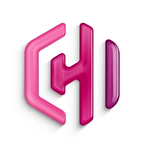AI in Sports Analytics: How to Connect Humans and Algorithms
Visit our blog to find more articles covering AI, mobile app development, IoT, and other technologies used for achieving ambitious business goals.
For many sports enthusiasts, having a personal coach is a dream come true. However, the cost is prohibitive for most people, with the average one-hour class costing around USD 40-USD 90. As is often the case, technologies have their answer to the issue, and this answer is AI training tools.
CHI Software has been diving into AI in sports analytics with a special focus on a table tennis app. Whether you’re a startup looking to break into the sports technology scene, or an existing app aiming to up your AI game, this article has a lot to share with you. Let’s explore how AI is revolutionizing sports training.
Machine Learning and Data Analytics for Performance Prediction and Strategy Optimization
Predictive analytics in sports
A lot of coaches have spent years struggling with a mountain of data on athletes’ past performances. Imagine what it takes to sift through all that information manually! This is where machine learning algorithms can be really helpful.
You can predict future performance trends by feeding historical data into sophisticated algorithms. These predictions help coaches and smart applications identify when an athlete’s performance might peak or when they might need extra rest, helping them adjust training schedules and strategies.
Decision-making and strategy optimization
By analyzing data from past games, machine learning in sports can identify patterns and trends that might not be obvious to the naked eye. Coaches can use this information to develop strategies that exploit opponents’ weaknesses or optimize their team’s strengths.
Data visualization
Finally, all this data is only useful when it’s easy to understand. AI sports analysis tools can create visualizations that make complex data sets more accessible. Coaches and athletes can see performance trends, heat maps of movement patterns, and even predictive models in a clear and intuitive format, leading to efficient data-driven decisions.
Computer Vision (CV) for Automated Highlights and Technique Analysis
Capturing the action
Today you don’t need a camera crew or specific hardware to record an intense match or a regular home workout. We all have smartphones by our side, don’t we? But when athletes or coaches have recorded hours of footage, watching it can be more tiring than exercising! Computer vision, an AI subset, offers a solution.
Smart coaching tools can scan through videos faster than you can say “deuce,” picking out the juiciest moments. Those killer shots and nail-biting rallies? They’re all automatically compiled into highlight reels.
Breaking down the athlete’s technique
AI for sports skill development doesn’t just watch; it analyzes. Every movement in a player’s swing, stance, and footwork can be put under the microscope.
If we take table tennis as an example, athletes will get feedback on their serve technique, footwork patterns, or stroke mechanics.
The best part is that it’s not just highlighting what a person is doing wrong — it can show players how to improve on their flaws. With visual breakdowns and comparisons to pro techniques, users see exactly where they can up their game.
Injury prevention
CV can analyze patterns in performance and training data to spot potential risks. For instance, if an algorithm notices that a sprinter’s stride is becoming slightly uneven over time, it might indicate an impending injury. Human coaches or software tools can then intervene early, adjusting training loads or focusing on specific muscle groups to prevent the injury from happening.
Natural Language Processing (NLP) for Personalized Coaching
Applying the power of words in sports
AI in athlete monitoring can also communicate with users like a pro — all thanks to natural language processing. This technology fuels any chatbot you’ve come across. If you’ve tried talking to ChatGPT, you know what AI is capable of in terms of communication.
With NLP, your generative AI coaching tool doesn’t just spit out robotic instructions — it tailors its language to the desired style, preferences, and even mood. Here’s how it works its magic:
- It learns the user’s vocabulary: The more a person interacts, the better AI understands their communication style;
- It adapts to the athlete’s skill level: Whether beginner or pro, it’ll speak their language;
- It reads between the lines: Algorithms understand the human’s sentiment and adjust their tone.
But it’s more than warm fuzzies. NLP also helps break down complex techniques into bite-sized, easy-to-understand chunks, making the practice more enjoyable for beginner sportspeople.
A true power in combination with other AI technologies
When combined with other AI tech, like computer vision, NLP creates a powerhouse of sports skill improvement. Let’s review an example from table tennis once again.
An athlete is practicing their serve. After the CV component analyzes their form, NLP can explain what an athlete is doing right or wrong in a friendly way. It might say, “Great follow-through! But remember, keep your elbow high — like you’re reaching for a cookie jar on the top shelf.”
This combination of visual analysis and tailored communication sets AI coaching apps, like CHI Software’s table tennis coach, apart from traditional training methods.
We’ve got so much more to tell you! Continue reading our original article to learn about the market of AI in sports, our experience of implementing AI coaching for table tennis, and the first steps for creating your AI coaching app from scratch.
